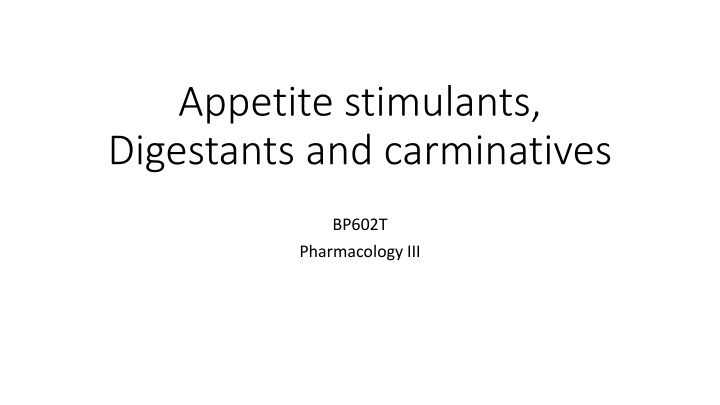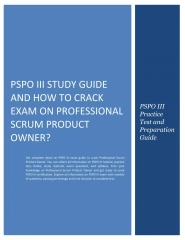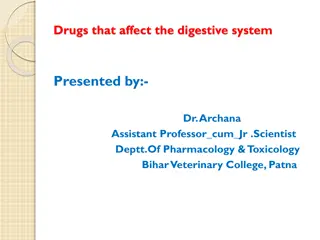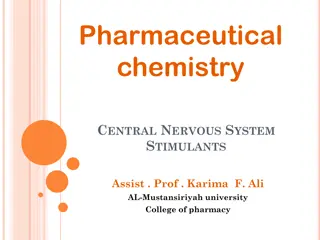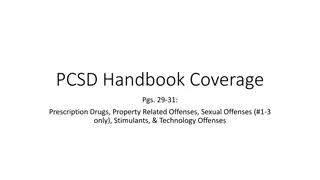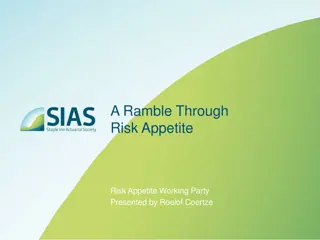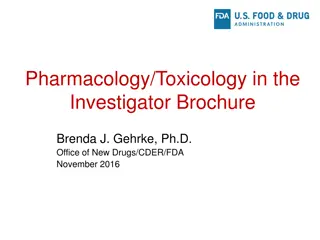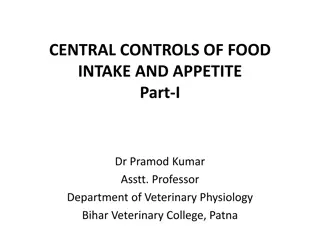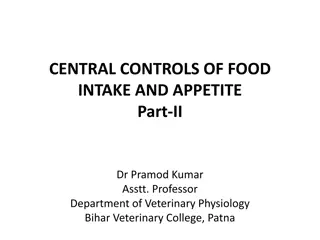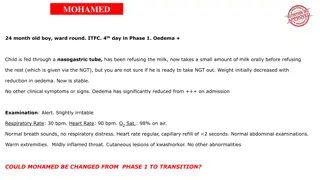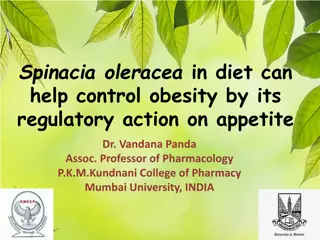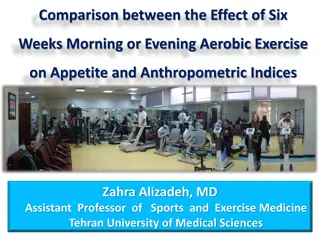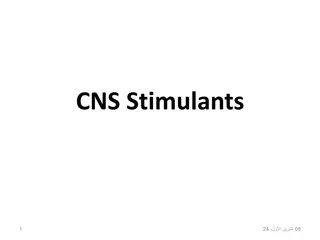Appetite Stimulants, Digestants, and Carminatives in Pharmacology III
Appetite is influenced by various factors including hypothalamic peptides, catecholaminergic pathways, and serotoninergic signaling. Loss of appetite, like anorexia, can stem from both physical and psychological causes. Alcohol can stimulate gastric secretion but chronic consumption may reduce appetite. Anorexia nervosa is a chronic disorder characterized by self-induced weight loss and appetite loss. Digestants aid digestion and promote the breakdown of food in the gastrointestinal tract.
Download Presentation

Please find below an Image/Link to download the presentation.
The content on the website is provided AS IS for your information and personal use only. It may not be sold, licensed, or shared on other websites without obtaining consent from the author.If you encounter any issues during the download, it is possible that the publisher has removed the file from their server.
You are allowed to download the files provided on this website for personal or commercial use, subject to the condition that they are used lawfully. All files are the property of their respective owners.
The content on the website is provided AS IS for your information and personal use only. It may not be sold, licensed, or shared on other websites without obtaining consent from the author.
E N D
Presentation Transcript
Appetite stimulants, Digestants and carminatives BP602T Pharmacology III
Appetite Appetite Appetite is a desire to eat or drink. Appetite is a complex phenomenon influenced by several factors. The final outcome is achieved by the release of various hypothalamic peptides which are integrated with catecholaminergic, serotoninergic and opioid signaling pathways. Dopamine and 5-HT mediated processes in the CNS, and Ghrelin, a gut-brain peptide, probably play an important role in appetite control. Loss of appetite (anorexia) is a common complaint in clinical practice. Its etiology varies from prolonged, debilitating illnesses to purely psychological disturbances such as depression. It is common in patients with widespread cancer. Symptomatically, appetite can often be improved by varying the diet and by use of such simple preparations like - Lemon pickles, Bitters such as bitter orange peel and soups. The aromatic bitter appetite stimulants combine the property of bitterness with that of an aromatic volatile oil e.g. orange, ginger and cardamom.
Alcohol: In small quantities (10%), given before a meal it can augment the gastric secretion both reflexly by stimulation of the taste buds and by a direct action. It is a major constituent of popular tonics . Many tonics dispensed in fancy bottles contain 10-15% of alcohol. Repeated ingestion of alcohol, however, causes chronic gastritis and a diminution in appetite. The use of alcohol containing tonics in children is to be condemned. Their prolonged use even in adults is to be discouraged. Megestrol acetate and Glucocorticoids are useful in increasing the appetite but not necessarily weight in patients with cancer-induced cachexia. Insulin and oral hypoglycemics augment gastric secretion by producing hypoglycemia; however, their use is irrational and hazardous. Similar claims have been advanced for vitamin B12 and Anabolic steroids but whether appetite stimulation is their primary action or secondary to their metabolic effects remains to be established. The 5-HT antagonist Cyproheptadine, has also some appetite stimulating property; however, used in large doses, it inhibits the release of ACTH and depresses the circulating cortisol level. Thus there is no safe and reliable appetite stimulant.
Anorexia nervosa is a chronic disorder characterised by loss of appetite and self induced weight loss, accompanied by psychological and physiological alterations such as amenorrhoea. Hypothalamic abnormalities are believed to play a role in its pathogenesis. Almost no pharmacological agent of proven value is available for its treatment. Olanzapine, an atypical antipsychotic acting on multiple receptors, and Reboxitine (a selective noradrenaline reuptake inhibitor (NaRI), the first drug of new antidepressant class. Reboxetine is an a-ariloxybenzyl derivative of morpholine), an antidepressant, have been tried as adjuncts. Antiemetic Dronabinol is pure Tetrahydrocannabinol produced synthetically or extracted from Cannabis. With CNS effect, in lower dose, it is an appetite stimulant as well DIGESTANTS The digestants are the drugs that are claimed to aid digestion in the gastrointestinal tract. These are substances intended to promote digestion of food. A number of proteolytic, amylolytic and lipolytic enzymes are marketed in combination formulations and are vigorously promoted for dyspeptic symptoms, and as appetite stimulants or health tonics. They are occasionally beneficial, the commonly used digestants are:
PEPSIN: This is a proteolytic enzyme. May be used along with HCl in gastric achylia (a condition characterised by defective acid and pepsin secretion.) due to atrophic gastritis, gastric carcinoma, pernicious anaemia, etc. Enzyme, PAPAIN, obtained from vegetable source (raw papaya), also has proteolytic properties. Its efficacy after oral ingestion is doubtful. RENNIN: This is a partially purified milk-curdling enzyme, obtained from the glandular layer of calf stomach. It is used in the preparation of cheese. PANCREATIN: It is a mixture of pancreatic enzymes obtained from hog and pig pancreas. It contains amylase, trypsin and lipase. It has been employed as a replacement therapy in chronic pancreatitis, obstruction caused by the cancer of the head of pancreas, cystic fibrosis, and after total gastrectomy and pancreatectomy. It is not useful in GI disorders unrelated to pancreatic enzyme insufficiency. It is administered orally in enteric coated capsules, to prevent its gastric inactivation. Prolonged use of pancreatin may cause fibrosing colonopathy. BILE AND BILE ACIDS: Normally, about 1000 ml of bile is secreted by the liver per day. It contains bile acids, cholesterol and bilirubin. Bile acids are important in emulsifying the fats in the intestine.
Cholecystokinin (CCK), the polypeptide secreted by the duodenal mucosa, is the main stimulant to biliary secretion. Bile salts and bile acids increase the flow as well as the concentration of bile and are termed choleretics. The bile salt preparations have been employed to facilitate surgical drainage, as replacement therapy in biliary fistulae, and for their choleretic effect in conditions like liver cirrhosis and functional hepatic insufficiency. Their usefulness, however, is doubtful. CHENODEOXYCHOLIC ACID (CDCA, Chenodiol): This normal constituent of bile reduces biliary cholesterol concentration by depressing hepatic cholesterol secretion and improves solubility of cholesterol in bile. It dissolves radiolucent gallstones but is ineffective with the radio-opaque (calcified) ones. The results are poor in the presence of a nonfunctioning gall bladder. The drug causes diarrhoea, increase in the LDL cholesterol and rarely hepatotoxicity. It has been replaced by ursodeoxycholic acid. URSODEOXYCHOLIC ACID, (Ursodiol) an analogue of CDCA is formed from chenodiol by colonic bacteria. It has similar actions but unlike chenodiol, it does not increase the secretion of bile acids into bile. Given orally, it is absorbed rapidly and taken up by the liver. It is better tolerated than chenodiol. Ursodiol, given orally in the dose of 8- 12 mg/kg/day, in divided doses, has been reported to cause clinical, biochemical and histological improvement in primary biliary cirrhosis. It acts by modifying the composition of bile acids in the liver, thereby hindering the progression of the pathological process. It lowers the serum cholesterol levels in these patients.
Diastase and Takadiastase These are amylolytic enzymes obtained from the fungus Aspergillus oryzae. They have been used in pancreatic insufficiency, but efficacy is equivocal. Enzyme preparations containing an antispasmodic or a laxative and fixed dose combinations of pancreatine or pancrelipase containing amylase, protease and lipase with any other enzyme are banned in India Methyl polysiloxane (Dimethyl polysiloxane, Simethicone, Dimethicone) It is a silicone polymer, a viscous amphiphilic liquid reduces surface tension and collapses froth, antifoaming agent . It is not absorbed from g.i.t. and is pharmacologically inert. Added to antacid, digestant and antireflux preparations, it is briskly promoted as a remedy for gas , a very 671 CHAPTER 47 ANTIEMETIC, PROKINETIC AND DIGESTANT DRUGS common gastric complaint. It is also claimed to coat and protect ulcer surface, to aid dispersion of antacids in gastric contents, and to prevent gastroesophageal reflux Carminatives Most of these drugs are aromatic volatile oils. They act by mild stimulation thereby increasing the GI motility and causing relaxation of sphincters. They produce a feeling of warmth in the stomach. They do not affect the gastric acid secretion significantly. Indian food contains enough carminatives in the form of various spices and condiments.
The common carminatives are: Cardamom seeds, Ginger, Fennel seeds, Asafoetida, Cinnamon bark, Cloves, Coriander and Anise. Along with Sodium bicarbonate, they form important constituents of various Gripe water mixtures commonly used in infants to relieve griping. Although carminatives may afford some quick symptomatic relief and audible satisfaction, it must be remembered that flatulent dyspepsia may be associated with disorders such as peptic ulcer, biliary tract disease, the irritable bowel syndrome, alimentary tumours and even IHD. DIMETHYLPOLYSILOXANE: This silicone derivative has been advocated in symptomatic treatment of postprandial and postoperative flatulence and abdominal distension. It is believed to act as a defoaming agent, allowing the gas to escape from the GI tract, providing comfort to the patient with gases. However, evidence to support these claims is not convincing. It is not particularly effective in reducing gas that may interfere with radiologic or ultrasound examination of the abdomen. Simethicone is a mixture of dimethylpolysiloxane and silicagel
